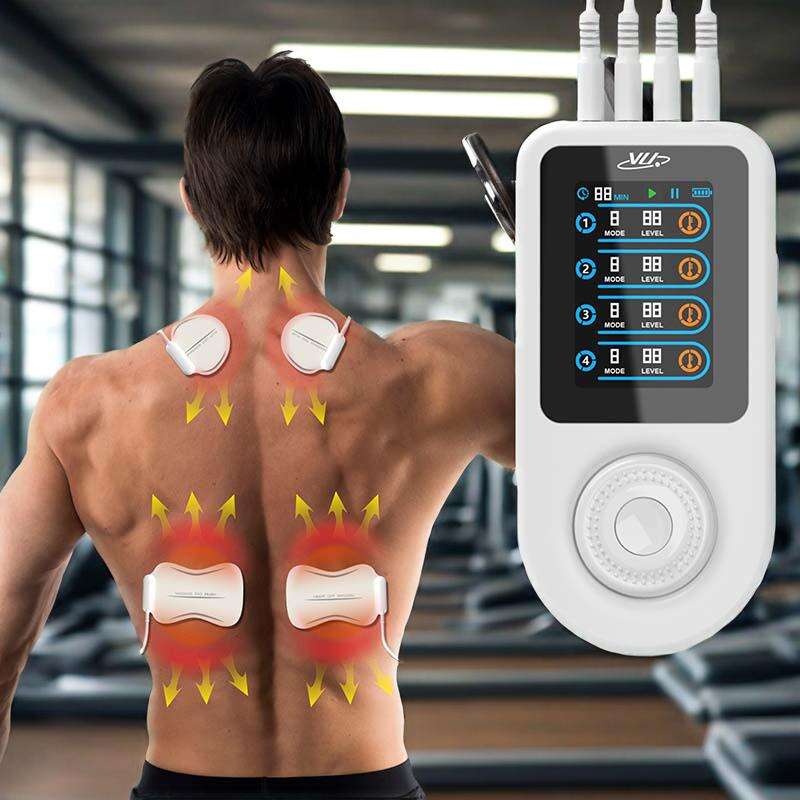Unit 301 No. 6 Xianghong Road,Torch Hi-Tech Zone Industrial Park,Xiang'an District, Xiamen P.R.China +86-592-5233987 [email protected]
In the current era of rapid technological development, the field of physical therapy has also witnessed new changes. The combination of TENS (transcutaneous Electrical nerve stimulation) and EMS (Muscle Electrical stimulation) technologies is gradually becoming the focus of attention, triggering extensive discussions on whether they can replace traditional physical therapy. Traditional physical therapies, such as acupuncture and massage, have long played a significant role in relieving pain and promoting physical recovery. The emergence of the TENS+EMS combination has brought new possibilities to physical therapy.

The TENS technique, or transcutaneous electrical nerve stimulation, stimulates the nerve fibers on the skin surface with low-frequency electrical pulses, alters the transmission mode of pain signals, and triggers the release of endogenous substances such as endorphins, thereby reducing the arrival of pain signals in the brain and achieving the effect of pain relief. This technology is compact and portable, allowing patients to use it alone at home. It has an alleviating significant impact on pain problems such as muscle soreness, arthritis, and sports injuries. The EMS Massager directly stimulates muscle fibers with electrical pulses, simulates natural nerve impulses, promotes muscle contraction and relaxation, helps enhance muscle strength, improves muscle shape, and facilitates recovery. For patients with hip injuries, labrum injuries, hip collisions, etc., as well as fitness enthusiasts, the EMS massager is a powerful assistant for muscle recovery and training.
Take a patient who has been troubled by low back pain for a long time as an example. He tried various traditional physical therapy methods, such as acupuncture and massage. Although they could relieve the pain to a certain extent, the effect was not long-lasting. Later, on the doctor's advice, he used the TENS+EMS combination device. The TENS function blocks the transmission of pain signals, and then the EMS function stimulates the lumbar muscles to enhance their strength. After using it for a period of time, his symptoms of lower back pain have been significantly improved. Not only has the frequency of pain attacks decreased, but his ability to move his lower back has also increased. This case fully demonstrates the potential of the TENS+EMS combination in alleviating pain and promoting recovery.
Compared with traditional physical therapy, the TENS EMS body massager has some unique advantages. First of all, it has higher accuracy. The TENS unit (TENS device) can adjust the frequency, intensity and treatment time according to personal needs. The EMS massagers can also choose different modes and intensifies according to their own needs, and can stimulate the painful areas and muscles more precisely. Secondly, it is convenient to carry. Whether at home, in the office or on the go, it can be used anytime and anywhere, providing great convenience for patients. Furthermore, it has certain scientific basis. Our nervous system and muscle cells are essentially electrochemical. When an electric current passes through the body, it simulates the natural electrical signals sent by the brain to the muscles. Such stimulation can enhance muscle contraction, improve nerve conduction, and even change the perception of pain.
However, the TENS+EMS massager cannot completely replace traditional physical therapy. Acupuncture in traditional physical therapy, by stimulating specific acupoints, regulates the circulation of qi and blood in the human body and has unique therapeutic effects. For some chronic diseases and complex physical conditions, acupuncture can regulate the body as a whole and achieve the effect of treating both the symptoms and the root cause. Massage stimulates specific acupoints on the body through manual techniques to regulate qi and blood, relieve muscle tension, and promote metabolism. It plays an irreplaceable role in alleviating muscle fatigue and improving physical functions. Moreover, traditional physical therapy often emphasizes communication and interaction with patients. Doctors or masseurs can promptly adjust treatment plans based on patients' feedback. This kind of humanistic care is incomparable to the TENS+EMS massager.
From a collaborative perspective, the TENS+EMS combination and traditional physical therapy can complement each other. During the rehabilitation treatment process, the TENS+EMS massage device can be used first to relieve pain and enhance muscle strength, creating better conditions for the subsequent traditional physical therapy. For example, before undergoing acupuncture treatment, the TENS function is used to relieve the patient's pain, enabling them to receive acupuncture treatment more relaxed. When performing massage therapy, the EMS function is combined to stimulate the muscles and enhance the effect of the massage. This collaborative treatment approach can fully leverage the advantages of various treatment methods, providing patients with more comprehensive and effective treatment plans.
Looking ahead, the TENS+EMS combination technology is expected to play a greater role in the field of physical therapy. With the continuous advancement of technology, the performance of equipment will keep improving and its functions will become more complete. Meanwhile, the integration with technologies such as artificial intelligence and big data will enable the TENS+EMS combination device to provide more personalized treatment plans based on the individual differences of patients. However, we should not overlook the value of traditional physical therapy. We should continue to explore the path of coordinated development between the TENS+EMS combination and traditional physical therapy, so that these two treatment methods can promote each other and jointly make greater contributions to the cause of human health.